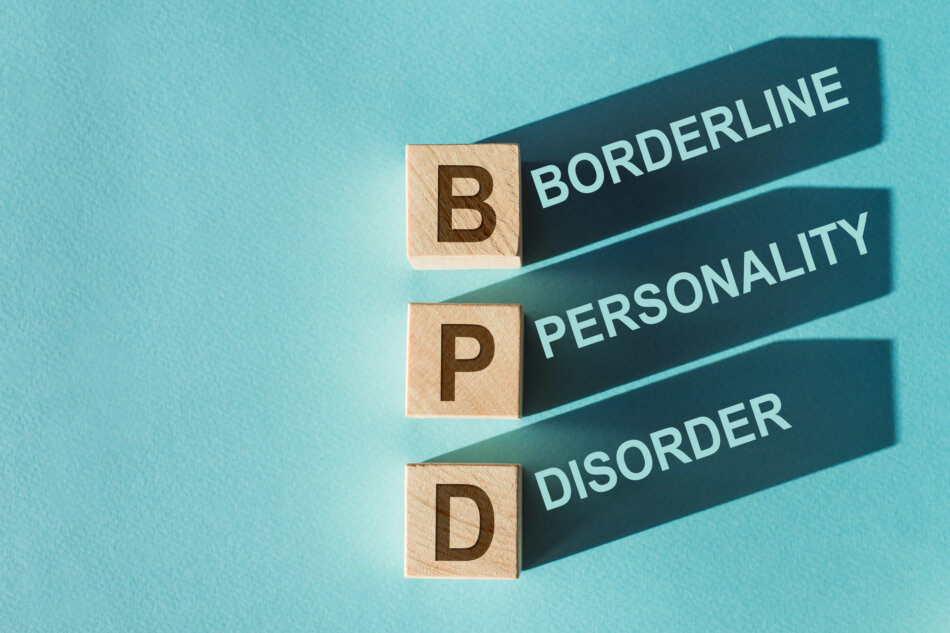When you’re facing depression alongside substance use issues, finding a program that offers comprehensive treatment for depression and substance use can feel overwhelming. You may worry that one issue will be treated while the other is sidelined, or that insurance won’t cover the care you need. Fortunately, integrated care models—often called dual diagnosis programs—address both conditions simultaneously, delivering tailored treatment programs in a supportive environment. As a result, you gain access to coordinated therapy, psychiatric care, relapse prevention and holistic support under one roof.
In addition, more facilities now accept private insurance and Medicaid, making high-quality, evidence-based care accessible. Whether you’re exploring intensive outpatient options or a residential setting, understanding how dual diagnosis works and what to look for can empower you to take the next step toward lasting recovery.
Understanding co-occurring disorders
What dual diagnosis means
A dual diagnosis, also known as a co-occurring disorder, arises when you experience both a mental health condition—such as depression—and a substance use disorder at the same time. These intertwined challenges often feed one another: untreated depressive symptoms can lead to self-medication with alcohol or drugs, while substance use can exacerbate mood swings, hopelessness and anxiety. Acknowledging this interplay is the first step in pursuing comprehensive care tailored to your unique challenges.
Prevalence and impact
Approximately 21.5 million adults in the United States live with both a mental health disorder and a substance use disorder (SAMHSA). People with untreated mental illness face a higher risk of developing a substance use disorder, and vice versa. As a result, co-occurring disorders are linked to:
- Increased hospitalizations and emergency visits
- Greater risk of relapse when each condition is treated separately
- Complex medical needs, including management of drug interactions
Overall, recognizing the scope of co-occurring disorders highlights the necessity for treatment programs that coordinate all aspects of your care.
Exploring integrated care benefits
Evidence-based therapy approaches
Integrated programs combine therapeutic methods proven effective for both conditions. Common approaches include:
- Cognitive behavioral therapy (CBT) to identify and reshape negative thought patterns
- Dialectical behavior therapy (DBT) for emotional regulation and distress tolerance
- Medication-assisted treatment (MAT) for opioid use disorder, paired with antidepressants when appropriate
- Motivational interviewing to strengthen your commitment to change
By blending these modalities into a single plan, you benefit from a cohesive strategy rather than piecemeal interventions.
Coordinated holistic care
In an integrated setting, you work with a multidisciplinary team—psychiatrists, therapists, nurses and case managers—who maintain open communication about your progress. This “no wrong door” policy ensures that no matter where you seek support, you’ll be assessed, treated or referred to appropriate services without delay (SAMHSA). Furthermore, holistic elements like yoga, mindfulness and nutrition counseling are often woven into your individualized plan, fostering overall wellness.
Examining treatment components
Psychiatric assessment and medication management
Your journey typically begins with a thorough evaluation by a psychiatrist or psychiatric nurse practitioner. This assessment considers your mental health history, substance use patterns and any medical factors. Based on findings, your provider may prescribe:
- Antidepressants (SSRIs, SNRIs) to stabilize mood
- Mood stabilizers or antipsychotics for bipolar or psychotic symptoms
- Medication-assisted treatments such as buprenorphine or naltrexone for opioid or alcohol use disorders
It’s crucial to monitor potential drug interactions—combining benzodiazepines with certain addiction medications, for example, can lead to serious adverse effects (SAMHSA).
Therapy for depression
Individual and group therapies form the backbone of depression treatment within a dual diagnosis model. Through approaches like CBT and interpersonal therapy, you learn to:
- Identify and challenge depressive thought patterns
- Develop healthier coping strategies for stress and triggers
- Improve communication and relationship skills
Joining a co-occurring disorder therapy program also connects you with peers who understand your struggle, fostering a supportive environment where you can share experiences and insights.
Substance use interventions
Addressing substance use under the same roof as mental health care offers clear advantages. Typical interventions include:
- Medication-assisted treatment to reduce cravings and withdrawal symptoms
- Structured group therapy for accountability and mutual support
- Relapse prevention planning, including trigger identification and coping skills
- Harm reduction measures, such as vaccinations for hepatitis A and B and screening for HIV risks related to injection drug use (SAMHSA)
These tailored treatment programs ensure that your substance use disorder and depressive symptoms are addressed concurrently, boosting your chances for sustainable recovery.
Navigating insurance coverage
Essential insurance protections
Under the Affordable Care Act, mental health and substance use services are classified as essential health benefits, which means coverage without lifetime or annual spending limits (HealthCare.gov). Parity protections further require insurers to cover behavioral health services on par with physical health treatments.
Programs accepting coverage
Many dual diagnosis centers accept a range of insurance plans, including:
- Private plans through employer or marketplace policies
- Medicaid and Medicare
- State-funded programs
Before enrolling, verify that your preferred facility offers a co-occurring disorder treatment that accepts insurance. If you rely on Medicaid, explore options like Oregon’s Integrated Co-Occurring Disorders program for OHP members, which coordinates mental health and addiction services under one roof (Oregon.gov).
Selecting the right program
Levels of care explained
Choosing the appropriate level of care depends on your needs, severity of symptoms and support system. The table below outlines common options:
| Level of care | Description | Learn more |
|---|---|---|
| Intensive outpatient program (IOP) | Structured therapy multiple times per week while living at home | dual diagnosis php and iop for adults |
| Partial hospitalization program (PHP) | Daytime treatment with medical oversight, returning home in the evening | dual diagnosis php and iop for adults |
| Residential treatment | 24-hour supportive environment for immersive, round-the-clock care | dual diagnosis residential program for adults |
| Inpatient rehab | Medically supervised hospital setting for severe cases requiring detox and stabilization | dual diagnosis rehab for adults |
Critical questions to ask
Before committing, consider asking your prospective program:
- Are staff members experienced in treating co-occurring disorders?
- What evidence-based therapies are offered?
- How is medication management coordinated?
- Do you accept my insurance plan?
- How do you involve family or peer support?
- What aftercare services and relapse prevention are provided?
These inquiries help ensure you receive the comprehensive care you deserve.
Preparing for integrated care
Setting realistic goals
Entering treatment with clear, achievable objectives enhances your motivation and sense of progress. You might set targets such as:
- Attending all scheduled therapy sessions for the next 30 days
- Reducing depressive symptoms by tracking mood changes daily
- Practicing mindfulness exercises three times per week
Work with your care team to refine these goals and incorporate them into your individualized plan.
Assembling your support network
Recovery thrives on connection. Reach out to:
- Trusted friends and family who can offer encouragement
- Peer support groups for shared understanding
- Community resources, such as online forums or faith-based groups
A robust support system amplifies the benefits of professional treatment and eases the transition back to daily life.
Supporting lasting recovery
Relapse prevention strategies
Maintaining the progress you’ve made requires ongoing attention to triggers and coping skills. Effective relapse prevention can include:
- Identifying high-risk situations and planning alternatives
- Practicing stress-reduction techniques like deep breathing or guided imagery
- Establishing a daily routine that balances self-care, work and leisure
- Joining a dual diagnosis recovery and relapse prevention treatment group for accountability
By integrating these habits, you build resilience and reduce the likelihood of setbacks.
Aftercare and community resources
After formal treatment ends, continued engagement with resources sustains your growth. Consider:
- Regular check-ins with a therapist or psychiatrist
- Support groups such as SMART Recovery or Alcoholics Anonymous
- Online tools like the SAMHSA Behavioral Health Treatment Services Locator (SAMHSA)
- Crisis lines such as the National Helpline at 1-800-662-HELP
These ongoing supports provide the structure and connection necessary for long-term wellbeing.
Taking the next steps
Starting your treatment journey
To begin, reach out to programs that specialize in integrated behavioral health. Verify your insurance benefits, schedule an intake assessment and review the treatment plan with your care team. Remember, asking questions and advocating for your needs is a vital part of securing the right fit.
Emergency and helplines
If you or someone you know faces an immediate crisis:
- Call 911 for life-threatening emergencies
- Dial 988 to connect with the Suicide and Crisis Lifeline
- Visit Smokefree.gov for support with tobacco cessation and related stressors
By taking these steps and leveraging a dual diagnosis approach, you can find hope, healing and a clear path forward. The support necessary for lasting recovery is within reach—reach out today and begin your journey to a healthier, more balanced life.










